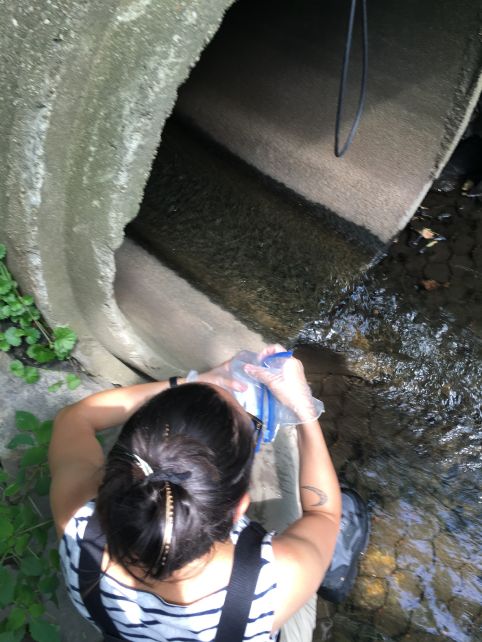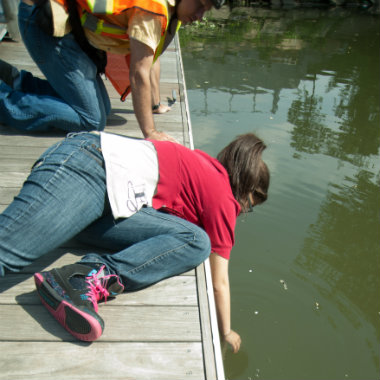How “clean” is the Bronx River?
Many people often ask us how clean is the water. That’s a great question and we’re glad you’re curious! The answer is a little more challenging because first we have to define what we mean by clean.
Is it clean enough to drink?
No! History tells us that the river was being considered for a drinking water source for NYC back in the early 1800s, but not long after, the river began to show effects from urbanization, from input of human wastes, and from channelizing parts of the river.
Is it clean enough to swim?
Not yet! But groups like the Alliance and SWIM are working with agencies, community groups, nonprofits, and other interested groups to improve water quality citywide.
Is it clean enough for things to live in?
Yes, it most definitely is and we have lots of wonderful, unique creatures that call the Bronx River home. We’d love for you to keep exploring these pages to find out more!
Is there anything we can do to help clean up the river?
Yes! Our ecology programming is designed to address the 3 main pollutants to the Bronx River and engage students, volunteers, and community members in data collection and restoration efforts.
The 3 main pollutants to the Bronx River are floatable trash, fecal pathogens, and low Dissolved Oxygen (which is what aquatic critters need to survive). Our Project WASTE Program was developed to address the floatable trash, and the water quality testing methods described on this page help us address the other two main issues. Our newest program, microplastics analysis, allows us to collect and identify microplastic pollution in the Bronx River. Project Water DROP builds on a legacy of bacteria monitoring on the Bronx River to find and identify outfalls that are contributing untreated sewage to the river. In order to improve, protect, and restore the Bronx River, a robust water quality-monitoring program is necessary to determine the types, locations, and severity of inputs. By addressing these water pollutants at their sources, we will begin to reverse the degradation of this urban river and promote ecosystem recovery and restoration.
Fill out the volunteer interest form and send us an email at christian.murphy@BronxRiver.org to get involved.
What do we test for?
At each study site either Alliance staff or stewards like you collect a variety of water quality indicators, including: (see glossary for definitions)
- temperature
- pH
- Dissolved Oxygen
- salinity/conductivity
- turbidity
- fecal pathogens*
- nutrients*
- microplastics*
*Not all study sites included in these special projects.
In some study sites we want to monitor the conditions and different points along its 24 mile length. In other places (like this pipe pictured, left) we might notice stormwater pipes flowing during dry weather and investigate further. In this case, there was a problem with a sewer backup that the City found thanks in part to our investigative help.
What methods do we use?
Because we use our data for scientific research and advocacy purposes, the EPA makes sure our data are comparable to other data through reviewing and approving our Quality Assurance Program Plan (QAPP):
Bronx River Water Pollution Monitoring Program QAPP
To see our results, see below:



